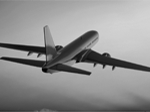Accessories, Cargo Terminals, Freight Forwarders, CARE, Ground Handlers, ULD Service providers, Safety
Recent Developments Regarding Air Cargo Fires
During the past couple of weeks we have seen the publication of two documents both of which have a direct bearing on the issue of cargo fires in cargo aircraft. This is a subject that is increasingly challenging airlines and which has a direct bearing on ULD development and handling.
The first of these documents is the Air Accident Investigation Report issued by the UAE General Civil Aviation Authority into the “Uncontained Cargo Fire Leading to Loss of Control Inflight and Uncontrolled Descent into Terrain” which occurred on a UPS aircraft departing Dubai on 3 Sept 2010 (http://www.gcaa.gov.ae/en/ePublication/admin/iradmin/Lists/Incidents%20Investigation%20Reports/Attachments/40/2010-2010%20-%20Final%20Report%20-%20Boeing%20747-44AF%20-%20N571UP%20-%20Report%2013%202010.pdf )
At over 300 pages, this is a heavyweight document, containing a vast amount of information, much of it highly technical. While a complete read of the document is recommended we can direct our readers’ attention to ULD specific content which can be found at:
A. Safety Recommendations (Section 4, pages 197-202):
4.6 SR 30/2013 proposes the development of new standards for containers that provide a far higher level of fire containment/suppression
4.7 SR 31/2013 proposes that certification rules be changed that require containers to meet the standards in 4.6
4.8 SR 32/2013 proposes that the FAA issue an advisory circular on the use of fire containment covers (FCC) to cover both cargo on pallets and also containers
Note: Sections 4.6 and 4.7 are in alignment with the NTSB safety recommendation issued 28 Nov 2012 and published on our website (see complete list of news)
B. Section 3.1 Findings (Section 3.1, pages 188-193)
#17 Pallets with rain covers can contain smoke until a large fire has developed
The second document issued is titled: SAE Standard AS6453 Fire Containment Cover – Design, Performance, and Testing Requirements. The formalization of this standard by SAE now clears the way for the aviation authorities (FAA, EASA) to create a Technical Standard Order (TSO) for Fire Containment Covers.
How will these developments impact ULD operations? ULD CARE would not wish to predict exactly what steps may be taken by the aviation authorities and airlines around the world in response to these developments, but we do believe that this is not a subject that can be ignored. In the months to come we will see continuous developments on the regulatory side of these issues and we will do our best to keep you informed.
From an operational perspective some airlines have already taken steps to implement ULD related measures to mitigate fire risk. UPS is reported to have made significant purchases of both Fire Containment Covers (FCC) as well as containers with fire resistant qualities. Other airlines are at various stages in implementing programs of a similar nature.
Operationally, the introduction of such equipment is going to present new challenges to all parties involved in ULD management. The equipment itself is considerably more costly than conventional ULDs and it also has very high serviceability requirements. There is little point having a fire containment cover over a pallet if it has a large tear along one side or is not fitted correctly. Safety is everyone’s business, and the hazards presented by Lithium batteries are a very real threat to air cargo safety. Airlines have little choice but to invest significantly in measures to mitigate this risk with special purpose ULDs being at least part of the solution. But it will be tragic if the ground handling and freight forwarding sectors do not make the necessary changes to their operating practices so that these ULDs are operated and handled in a manner that protects the airlines investments and the integrity of the fire containment properties.
While fire suppression/containment is clearly a priority, so is the early detection of fire. Currently smoke detectors fitted in the aircraft cargo holds perform this function. There is considerable attention on how both container design and also the –quite unofficial- practice of wrapping both containers and pallets with plastic sheet as rain protection can result in smoke being unable to escape in the critical early stages of a fire. The industry should not be surprised if clearer rules and regulations on this subject make an appearance.
ULD CARE views this whole subject as one of extreme importance and challenge. There are unfortunately no easy, quick and cheap solutions. It is going to take hard work by the entire industry pulling together to support whatever steps are taken by the airlines and authorities to implement ULD based solutions for improved fire detection, containment and suppression.
Interestingly enough, the Wednesday August 21st issue of Flying Typers contains an article titled “Testing Lithium Logistics” which, while not directly related to ULD, does highlight the dangers associated with the shipping of Lithium batteries. With Fire Containment Covers and Fire Resistant Containers, both being referenced in the report on the UPS air accident, ULD CARE felt compelled to bring this article to your attention. If you have not already done so, we strongly encourage you to read it.


